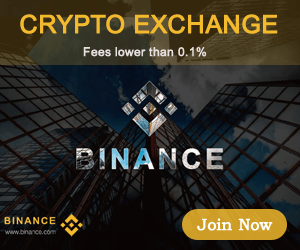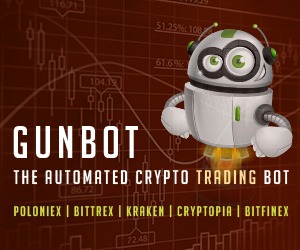In our world, that is to say an electrical force applied on one end of the wire will travel to the other end, affecting the wire wholly; there is no section of wire not affected by the electron. However, if you placed the same electron at the edge of a thin metal plate (two-dimensional wire), the number of paths to a different edge are numerous. The dimensional degree of freedom is one level higher than in the one-dimensional wire. The chances of two electrons placed on different edges ever meeting are improbable. The possible pathways are orthogonal and increase exponentially with each higher dimension of freedom. In this example, a zero-dimensional object on a two-dimensional plane allows for two dimensions of freedom.
Now consider two electrons placed at different locations on a metal sphere at different times throughout history since the big bang. This sphere is a four-dimensional version of our wire, allowing for four dimensions of freedom. These two electrons have an infinitesimally low chance of ever meeting. To summarize, the dimensional difference between two systems has an exponential effect on the inability for them to have influence upon each other.
Another interesting example of domain boundaries is found in chemical phase change. We all know of H2O as solid ice, liquid water, and gaseous vapor. These are all domains of H2O’s existence that are bounded on the pressure vs temperature graph by physical changes. We regularly observe the transformation of water via boiling, melting, condensation, and freezing. Most of us only observe these changes as manipulated by temperature changes. In a sufficiently cold environment (to the left of the triple point in the image below), decreasing the pressure causes solid ice to phase change into gas, omitting the liquid state completely. This is called sublimation and is the process by which freeze-dried food is produced, an important tool in increasing its shelf life.
I can’t describe how difficult it is to discover the inflection between the domain of imagination and the domain of the physical world, as I can’t perceive all of the dimensions of freedom between them.
“It’s like launching a pencil over the empire state building, having it reverse, come back down and land on a shoebox on the ground in a windstorm.” — Tim Urban on SpaceX landing a rocket upright for the first time.
I’d happily bet that the electrons in the four-dimensional example above will never meet. Yet two entities having common existence on multiple dimensions have a much higher probability of meeting. Consider two lines on a graph, these are two one-dimensional objects bound by the same two-dimensional plane.
The graph below depicts how two lines representing supply and demand can intersect, setting an optimal price (all of trade is dependent upon supply and demand being bound by the same domains so they can meet, satisfying the double coincidence of wants).
Let’s come back to Earth. If supply is the primary driver of value (demonstrated by the supply vs. demand graph), one might say that anything physical is totally scarce. They’d be wrong, of course, but only for taking supply and demand as too literal of a concept. The hidden complexity to supply is the amount of work to bring goods and services to market. Gold coins are much more useful than gold ore. Frédéric Bastiat describes the relationship between work, property and value in “The Law.” In short, the physical is finite but not necessarily scarce. This is another perspective on the laws of thermodynamics, in that unlimited resources are pointless if they cannot be properly utilized (just ask Venezuela’s oil producers). Scarcity and value are always measurable in energy and work, including Bitcoin’s proof of work. It is ironic then, that Bitcoin is the only purely scarce thing in the universe, and it’s not even purely physical.
Seeking Zero
Bitcoin is a practical application that straddles the intersection of the real and the imaginary. In Bitcoin’s eternal struggle , Gigi demonstrates the incentive-bounds of Bitcoin and summarizes it by saying, “Bitcoin grows on the edge of order and chaos.” He is describing how Bitcoin takes the “chaos” of randomness and leverages it into the “order” of blocks. Bitcoin is the [0,0] that allows us to convert chaos into order.
Information can be shared without diminishing. Information is fire, Satoshi is Zippo, and Bitcoin is the lighter. Being able to harness something intangible and bound it in a physical form breaks us free of our physical limits. All it requires is admitting what many of us are in denial about: the physical state isn’t our final form. The first epoch of man has been spent striving for understanding and earning rewards of the spiritual realm. A short span of man’s existence has been dedicated to developing one implementation of life after death: the computer.
We’ve been getting closer to building the digital ship of Theseus by reducing ourselves to bits. This may lead to a completely digital existence, or the ability to regenerate ourselves in meatspace elsewhere in the universe. Maybe we can have our cake and eat it too. There will be some uncomfortable truths to face along the way. Such as
Is a digital self truly the same as the original or merely a projection of what we can currently perceive?
Will our vanity drive us to chase perfection by altering either our DNA or our source code?
Is this the correct path of life?
Conclusion
“I will strike God to Earth and become a perfect being.” — Edward Elric, The Fullmetal Alchemist, interpreting a hieroglyph
“Well, that’s certainly an arrogant concept.” — Ling
A single living being cannot overcome the force of entropy. Everything that has ever lived, has died and decayed. Yet life itself continues to grow and improve. I mentioned above that I believe life is a “system working as one to leverage the potential energy of its environment to stabilize its own entropy.” Generally speaking, individual life forms are in competition with each other for resources. But on the grand scale, life itself is making progress in the fight against chaos. There are many examples of living beings working in tandem. A pride of lions works together to hunt, to grow and to survive. Man, as a being of higher intelligence, is able to work together in much more complex ways. Our intelligence continues to survive and grow with each generation.
The difference between an inanimate object and living being is intelligence. If knowledge is a force of infinite magnitude, then it will win out versus anything bound by the limits of the physical world, but it requires the right application. A virus has intelligence that has singular application: reproduction. Lions have a higher but still limited level of intelligence whose application is limited to the survival of a pride until a new alpha takes over. Humans have taken the application of knowledge a step further in that we can communicate our knowledge directly, allowing our collective intelligence to grow with each generation. The more effectively we apply our intelligence, the closer we can get to finding the gateway that unlocks the power of infinity, the next [0,0].
Applying infinite metaphysical concepts to the physical world allows us to achieve the improbable. Not because our knowledge is complete, but because our imagination is boundless. Bitcoin is an order-of-magnitude improvement for mankind. How many improvements would it take to counter or slow the forces of chaos? Possibly many but maybe not infinite. What do we currently accept as truth which may be fallible if we grow to a higher level of intelligence: The eventual end of our species? The heat death of the universe? The expected death of an individual life form? I hope I live long enough to see another shattered assumption.
[0,0] is the ultimate goal of mining life’s intelligence, not only as the common path of the physical and metaphysical, but also the goal of life as it applies to its change in entropy. If entropy is a stream and life is a fish swimming against the current, life’s ultimate goal is to build a watermill and leverage the force of the stream or dam it up entirely. Bitcoin has shown us not to take for granted the impossible of today which might be an afterthought of tomorrow.
“Life, uh, finds a way.” -Dr. Ian Malcom
This is a guest post by Corey Edwards. Opinions expressed are entirely their own and do not necessarily reflect those of BTC, Inc. or Bitcoin Magazine.





